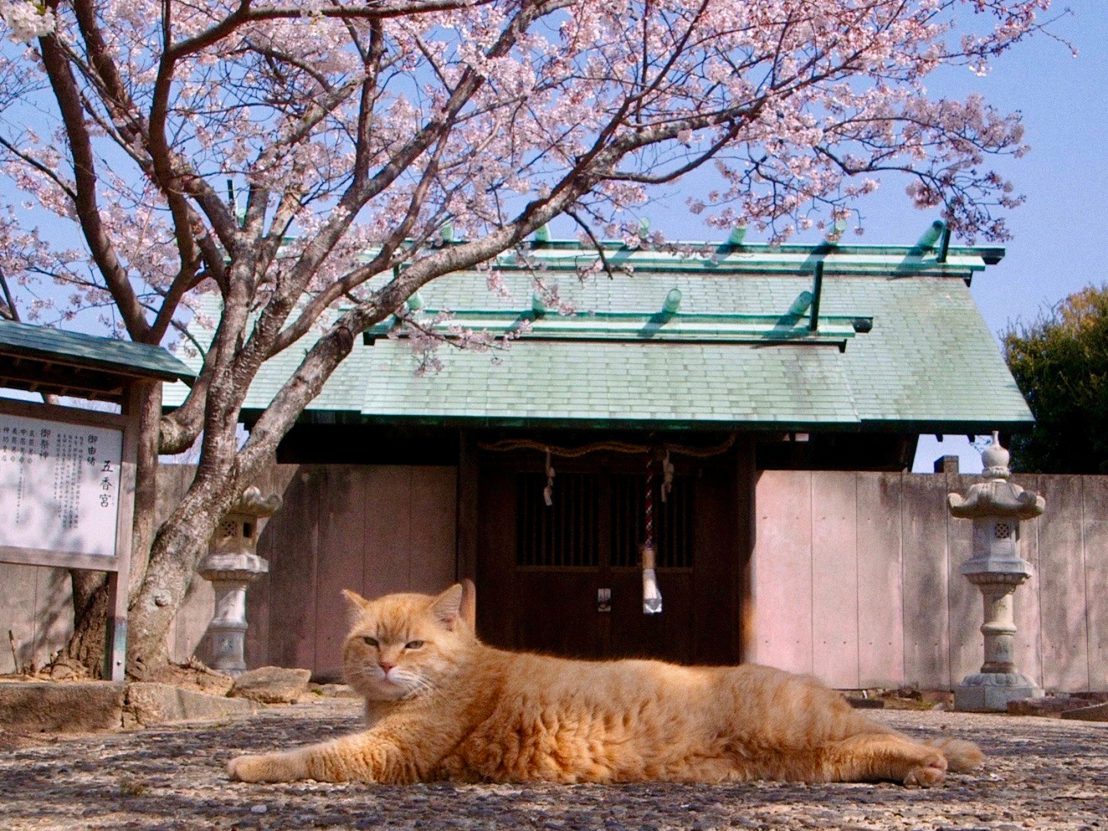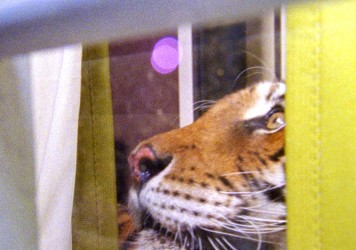
In the Japanese costal town Ushimado, a colony of stray cats eke out a fraught existence alongside the human residents, documented by filmmaker Kazuhiro Soda.
Nestled on the coast of southern Japan, about a 30-minute drive from Okayama, is the port town of Ushimado. It’s a relatively quiet place with less than 8000 human residents, and – in 2021 at least – about 30 feral felines. The stray cats predominantly reside at the Gokogu Shrine, at the top of a large hill that overlooks the harbour, and are the result of abandoned pets being left to fend for themselves over many years. For the most part, the cats and human residents have learned to coexist peacefully, but their presence is the source of some debate among the townspeople. Some believe the cats could be good for tourism in a town with few economic prospects. Others feel the cats are unsanitary, and their presence contributes to litter and potentially more abandoned animals, as ignorant owners feel adding another cat to the population won’t make any difference.
Kazuhiro Soda’s observational documentary records these conflicts, as well as the daily lives of both feline and human residents, during a single year. The impact of the Covid-19 pandemic appears in mentions of vaccinations and job redundancies, but the heart of the film remains the ups and downs that occur when animals and humans have to share an environment. The city of Setouchi (which incorporates the towns of Ushimado, Oku and Osafune) has funded a trap, neuter, release programme for the Gokogu cats, which sees volunteers attempt to curtail the breeding of the existing colony, while almost providing food and medical treatment. The idea is that with no new kittens being born, the population will decrease year on year, until “One day there will be no cats left,” as a local reflects sombrely.
While some of the elderly community welcome the eventual end of Gokogu’s feral cat population, others will miss their presence. A few regular visitors come to the town to feed and socialise with the cats – one young woman takes care to wipe their dirty faces, and is worried because she can’t find her favourite cat (Uchi, which means cow, as he’s black and white). She explains she loves cats but isn’t allowed one in her rented apartment. “I come here to heal,” she tells Soda. Meanwhile, the small harbour is shared between retirees who spend their days fishing, and the cats who eagerly await a share of the day’s catch. One ginger cat is particularly adept at stealing the fish that are given to them. The camera follows her as she slinks away, fish in mouth, to give the food to her two young kittens.
Soda himself is not unaffected, as a cheeky ginger cat invites themself into his home despite some protest. During a typhoon, the cat arrives at Soda’s door seeking shelter, and Soda permits the animal to stay in his porch to avoid the rain. The cat is shown asleep happily while the weather thunders down. This act of kindness is a recurring theme throughout the film, as various members of the community show their compassion for their neighbours. Even those who aren’t so keen on the cats don’t wish any bad fortune upon them, rather concern themselves with how they can clean up all the cat poop and the food detritus that comes from well-meaning custodians.
Immanuel Kant once said “We can judge the heart of a man by his treatment of animals” and the sentiment rings true in The Cats of Gokogu Shrine, where humans and nature must try to co-exist as best they can. Yet there’s an underlying melancholy about the film too, as old-timers reflect on how the town seems to have been left behind in urbanisation, and the cat population begins to dwindle due to the success of the neutering programme. The film ends with title cards that show the human and feline residents of the town who have passed away since filming, underscoring the passage of time and the inevitable changes to Ushimado’s landscape. Soon there might not be any cats left at Gokogu Shrine, but the lives they have touched remain, and Soda’s sparing, sweet film is a gorgeous tribute to the independent felines, and the kind people who lived in harmony with them.
Published 18 Feb 2024

This icy Austrian relationship drama ponders how much of a battering love can take before it all falls apart.

Did you hear the one about the guy who acquired a Bengal tiger and kept it in his New York apartment?